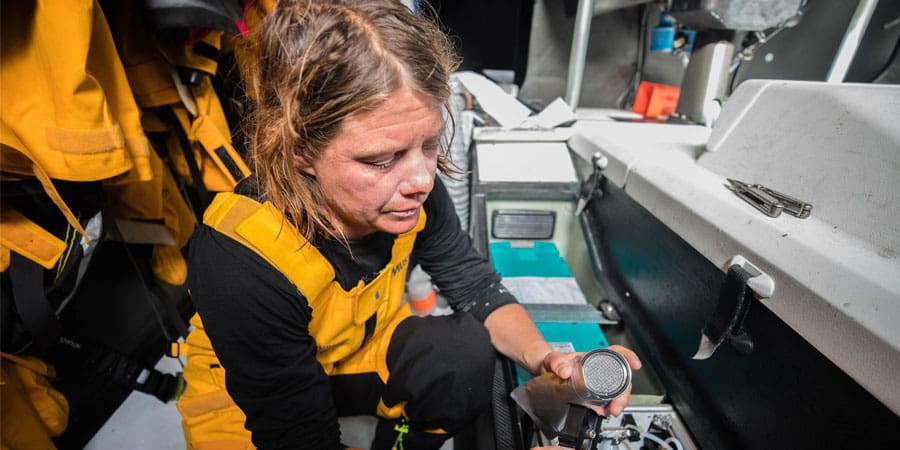Global Microplastic Map: following the completion of the sailing event, the groundbreaking science element of the Sustainability Programme revealed the spread of microplastic pollution.
Only three of the 75 samples collected during the race, south of Australia, east of Argentina and west of Ireland, have been found to contain no microplastics.
The most recent data collected, before the race finale in The Hague, by scientific devices on board Team AkzoNobel and Turn the Tide on Plastic boats, found particularly high levels of microplastics, 224 particles per cubic metre, in Skagerrak, a 150-mile strait that runs between Norway, Sweden and Denmark where the outflow from the Baltic Sea meets the Atlantic Ocean.
The highest levels of microplastic, 349 particles per cubic metre, were found in a sample taken in the South China Sea that feeds into the Kuroshio Current and the North Pacific Gyre. The second highest, 307 particles per cubic metre, came close from the point where the Mediterranean Sea and Atlantic Ocean meet (Strait of Gibraltar).
Even close to Point Nemo, the furthest place from land on Earth, where the nearest humans are on the International Space Station, between nine and 26 particles of microplastic per cubic metre were recorded.
The seawater samples were collected during the course of the 45,000 nautical mile, eight-month race, which passed six continents and 12 landmark Host Cities. The race began in Alicante last October, finishing in The Hague in June.
Anne-Cecile Turner, Sustainability Programme Leader for the Volvo Ocean Race, said: “We have used a sporting event to collect groundbreaking scientific data to provide a global map of microplastics concentrations – even finding them in some of the remotest places on Earth. The stark findings give a clear mandate for positive and decisive action from national governments, international organisations, business and individuals to stop plastic polluting our seas.”
“Our ambition is that the data will provide a new benchmark for our understanding of the spread of these ubiquitous particles and offer a template for future scientific methodology.“
“With the continuation of the Sustainability Programme, we will continue our mission to inspire, engage and act as a pioneer, with the aim of restoring ocean health.”
Dr. Toste Tanhua of GEOMAR Institute for Ocean Research Kiel, funded by the Cluster of Excellence Future Ocean, analysed the preliminary microplastics data at their laboratory in Kiel, Germany.
The data has been then uploaded to a National Oceanic and Atmospheric Administration (NOAA) database where scientists are able to access it open source.
Dr. Tanhua said: “Volvo Ocean Race Science Programme has contributed enormously to the understanding of microplastic contribution around the world, and has contributed to a global map of CO2 uptake by the oceans. The race has showed that the race yachts and sailors can be excellent science supporters.”
The boats also collect other oceanographic data measurements including temperature, dissolved CO2, salinity, algae content (as chlorophyll a) that gives an indication of levels of ocean health and acidification and supports quantification of the ocean’s uptake of CO2.
In parallel, 30 scientific drifter buoys, deployed during the race, are transmitting data that is essential for forecasting of weather and climate changes, in both the short and long term. This is being utilised by the World Meteorological Organisation and UNESCO’s Intergovernmental Oceanographic Commission.
